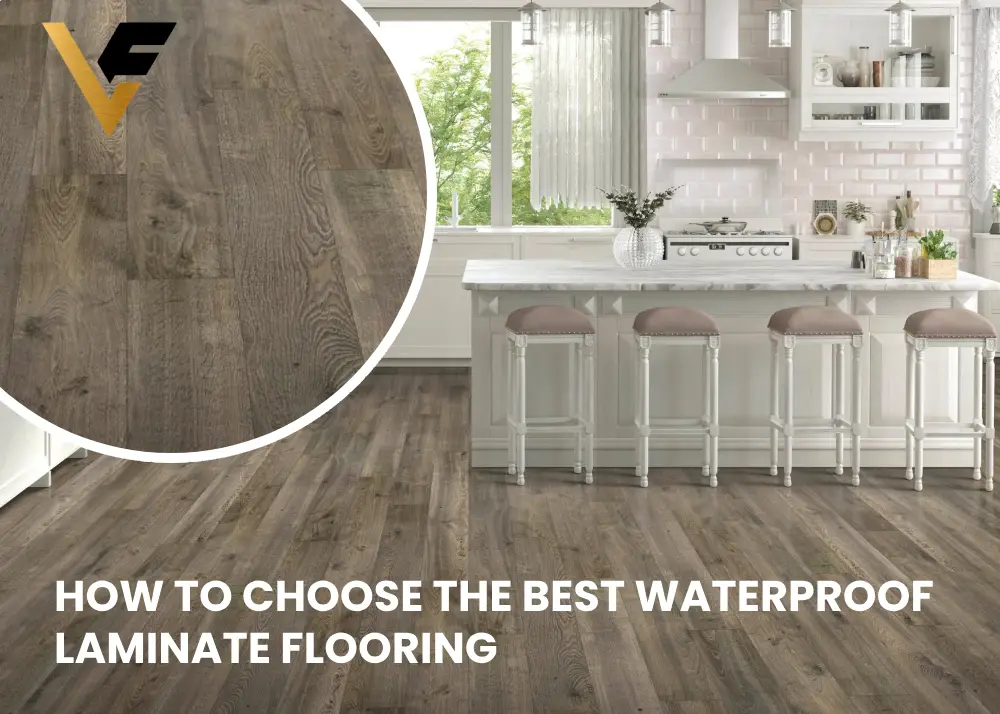How to Choose the Best Waterproof Laminate Flooring

Choosing the right waterproof laminate flooring for your home can transform your living space while ensuring durability and ease of maintenance. This guide will walk you through everything you need to know to make an informed decision, covering the types, features, installation, maintenance, and more.
What is Waterproof Laminate Flooring?
Laminate flooring is a multi-layer synthetic product fused together with a lamination process. Its inner core layer is usually composed of melamine resin and fiberboard materials. Waterproof laminate flooring takes this a step further by incorporating materials and technologies that prevent water from penetrating the surface and damaging the core.
Benefits of Waterproof Laminate Flooring
- Water Resistance: As the name suggests, waterproof laminate flooring can withstand exposure to water, making it ideal for kitchens, bathrooms, and basements.
- Durability: It is highly durable and resistant to scratches, dents, and stains, which makes it perfect for high-traffic areas.
- Aesthetic Appeal: Available in a wide range of styles and colors, it can mimic the look of natural wood, stone, or tile.
- Easy Maintenance: Cleaning is a breeze with waterproof laminate flooring, often requiring just a simple mop or vacuum.
- Cost-Effective: Compared to hardwood and other natural materials, it is often more affordable while still providing a similar aesthetic.
Types of Waterproof Laminate Flooring
- Standard Waterproof Laminate: Features a water-resistant core and a protective top layer. Suitable for areas with moderate moisture.
- Rigid Core Waterproof Laminate: Offers a more robust core structure, often with enhanced water resistance and durability. Ideal for high-moisture areas.
- Hybrid Waterproof Laminate: Combines features of vinyl and laminate flooring, providing superior waterproofing and comfort underfoot.
Key Features to Consider
When selecting waterproof laminate flooring, several key features should be taken into account:
- Thickness: Thicker flooring (12mm to 15mm) offers better durability and noise reduction.
- AC Rating: The Abrasion Criteria (AC) rating indicates the floor’s durability. An AC3 rating is suitable for residential use, while AC4 and AC5 are designed for commercial settings.
- Installation Method: Most waterproof laminate flooring uses a click-lock system, making it easy to install without glue or nails.
- Underlayment: Some products come with attached underlayment, which provides additional sound absorption and insulation.
- Edge Type: Beveled edges create a more natural look, while square edges offer a seamless appearance.
Step-by-Step Guide to Choosing the Best Waterproof Laminate Flooring
Step 1: Assess Your Needs
Consider the following questions:
- Which rooms will have the new flooring?
- How much foot traffic will the area experience?
- Is moisture a concern in this space?
- What style and color will complement your existing decor?
Step 2: Research and Compare Products
Look for reputable brands known for their quality and durability. Some of the top brands include Pergo, Mohawk, and Armstrong.
- Pergo: Known for its durability and realistic wood finishes.
- Mohawk: Offers a variety of styles and features, including scratch-resistant surfaces.
- Armstrong: Provides a range of waterproof options with advanced technologies for enhanced water resistance.
Step 3: Examine Product Specifications
Check the product details:
- Core Material: High-density fiberboard (HDF) cores are more water-resistant than medium-density fiberboard (MDF).
- Surface Finish: Look for a wear layer that provides resistance to scratches and stains.
- Warranty: A longer warranty often indicates higher quality. Look for products with at least a 10-year warranty for residential use.
Step 4: Get Samples
Order samples of your top choices to see how they look and feel in your home. Pay attention to:
- Color and Pattern: Ensure it matches your decor.
- Texture: Feel the surface to check if it meets your comfort needs.
- Edge Detail: Evaluate if you prefer beveled or square edges.
Step 5: Calculate the Total Cost
Include all aspects of the project:
- Flooring Cost: Price per square foot multiplied by the area.
- Underlayment: If not included, factor in the cost of underlayment.
- Installation: Consider if you’ll hire a professional or do it yourself.
- Additional Supplies: Trim, molding, and transition pieces.
Installation Tips
- Prepare the Subfloor: Ensure it’s clean, dry, and level.
- Acclimate the Flooring: Let the flooring adjust to room temperature and humidity for 48 hours before installation.
- Follow Manufacturer Guidelines: Adhere to the specific instructions provided by the manufacturer for the best results.
- Use Appropriate Tools: A saw, spacers, and tapping block are essential for a smooth installation.
- Allow for Expansion: Leave a gap around the perimeter to allow for natural expansion and contraction.
Maintenance and Care
- Regular Cleaning: Sweep or vacuum regularly to remove dirt and debris.
- Damp Mopping: Use a damp mop with a mild cleaner. Avoid excessive water which can seep into seams.
- Protective Measures: Use furniture pads and area rugs in high-traffic areas.
- Immediate Spill Cleanup: Wipe up spills promptly to prevent water damage.
- Avoid Harsh Chemicals: Stick to products recommended by the flooring manufacturer.
Common Mistakes to Avoid
- Ignoring Subfloor Preparation: An uneven subfloor can cause problems later.
- Not Allowing for Expansion: Lack of an expansion gap can lead to buckling.
- Using Excessive Water: Over-wetting during cleaning can damage the floor.
- Skipping Underlayment: Underlayment provides cushioning and noise reduction, enhancing the flooring’s performance.
- Not Following Installation Instructions: Manufacturer guidelines are there for a reason. Ignoring them can void warranties and cause installation issues.
Environmental Considerations
Opt for flooring that is environmentally friendly:
- Low VOC Emissions: Choose products with low volatile organic compound (VOC) emissions for better indoor air quality.
- Sustainable Materials: Look for flooring made from sustainably sourced materials.
- Recyclability: Consider the end-of-life disposal options for the flooring.
Conclusion
Choosing the best waterproof laminate flooring involves careful consideration of your needs, product features, installation requirements, and maintenance. By following the steps outlined in this guide, you can select a flooring option that not only enhances the beauty of your home but also provides durability and water resistance to withstand daily wear and tear. With the right choice, you can enjoy a beautiful, functional floor for years to come.


